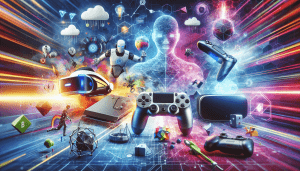In the ever-evolving landscape of education and training, simulation emerges as a powerful tool with transformative potential. From virtual classrooms to lifelike scenarios, simulations are shaping the future of learning and innovation. Let’s explore how simulations are revolutionizing education, their applications, and the exciting possibilities they hold.
The Rise of Simulated Learning
- Virtual Classrooms and Labs:
- Simulated environments allow learners to step into virtual classrooms, laboratories, and workshops.
- Students can conduct experiments, practice surgical procedures, or explore historical events—all within a safe, controlled setting.
- Immersive Experiences:
- Augmented and virtual reality (AR/VR) simulations transport learners to different worlds.
- Imagine studying ancient civilizations by virtually walking through their cities or practicing emergency response in realistic disaster scenarios.
- Skills Training:
- Simulations hone practical skills. Pilots, surgeons, and firefighters use flight simulators, surgical simulators, and fire drills for hands-on training.
- Gamified simulations make learning engaging and effective.
Applications Across Disciplines
- Healthcare and Medicine:
- Medical students practice diagnosing patients, performing surgeries, and managing emergencies.
- Simulated patients exhibit symptoms, respond to treatment, and provide valuable learning experiences.
- Business and Management:
- Simulations teach decision-making, leadership, and strategic planning.
- Business students run virtual companies, analyze market trends, and face real-world challenges.
- STEM Education:
- Physics, chemistry, and engineering simulations help visualize complex concepts.
- Students experiment with circuits, ecosystems, and molecular interactions.
The Turing-like Test for Validity
- Modeling Validity:
- Simulated learners must accurately represent real-world behaviors.
- Surprisingly, many studies lack evidence that their models address this fundamental question.
- A Universal Criterion:
- Let’s propose a standard: the Turing-like Test for simulated learners.
- Just as Turing’s test evaluates artificial intelligence, this test assesses the validity of educational simulations.
The Road Ahead
- Complete Simulated Models:
- Future research should focus on comprehensive simulated learner models.
- Represent broader aspects of student learning, not just narrow facets.
- Validating the Models:
- Rigorous validation is essential.
- Simulations must pass the Turing-like Test—convincingly mimic real learners.
In the dynamic intersection of education, training, and innovation, simulations are our compass, guiding us toward a future where learning knows no bounds.





